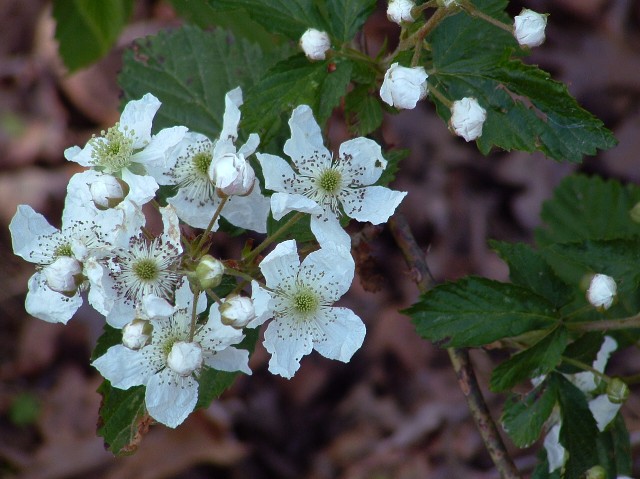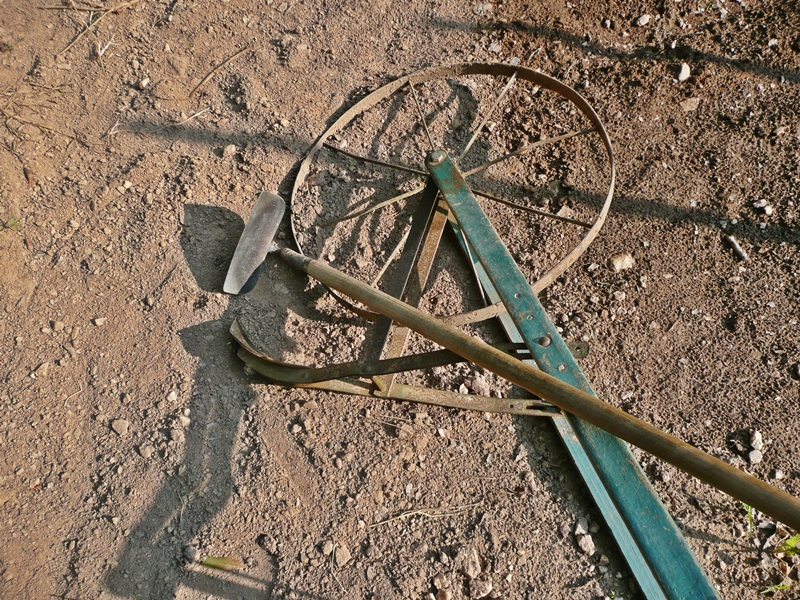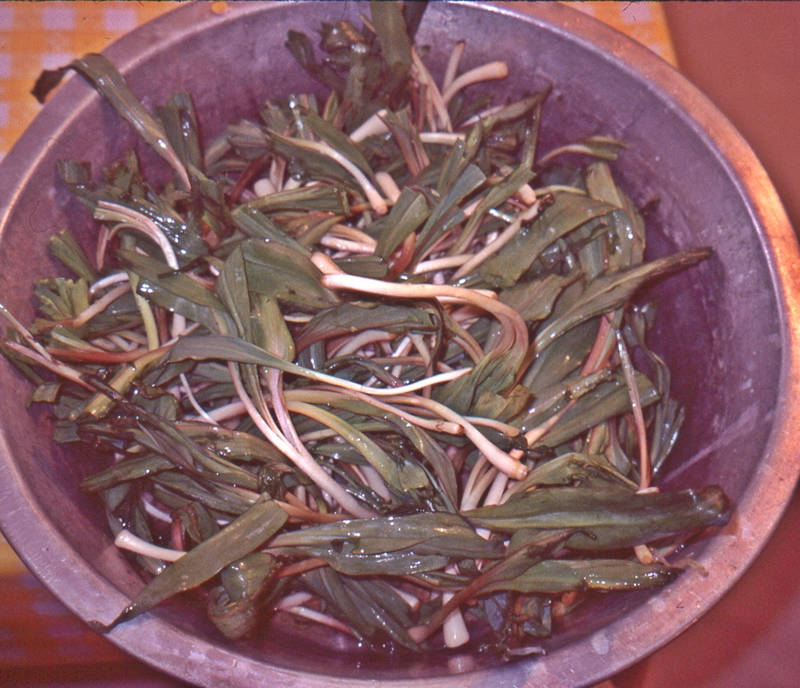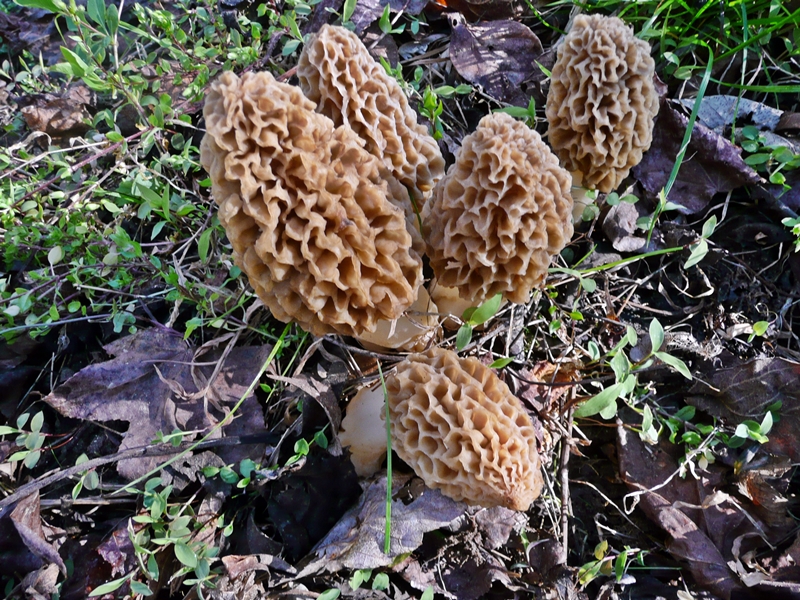AWESOME APRIL
GIVE ME YOUR THOUGHTS
Before getting to the meat of the matter, this month’s newsletter, I have to ask for your input on a matter of some moment. The number of subscribers to this free newsletter has reached a point where the platform will no longer let me offer it without charge. That’s good news in terms of folks interested but not so welcome when it comes to my purse. I already pay (not enough) a webmaster to get things ready, and putting the newsletter together each month takes time away from projects that actually have at least some chance of making a few nickels. That being said, I great enjoy doing this and would like to think, based on reader comments, that many of you find joy in my monthly musings. I also sell some books, though not a lot, and this month I’m not even offering a “special.” Still, I’m suddenly facing new costs of about $50 a month. I’d just like to know what you think I should do.
Should I charge a nominal fee (say $5 a year)? Should I invite donations from those who are so inclined (something I’ve done multiple times in recent weeks for publications which were struggling to survive because of reduced advertising)? Should I seek out sponsors (I’m quite reluctant to do this, I might note)? Should I just absorb the losses and figure it’s for the better in the grander scheme of things? Should I just kiss the whole project of a monthly newsletter goodbye (I’d find this tough as I am in the 17th year of doing this)? Do you have other suggestions? Let me know, and thanks in advance.
Now let’s turn to a more pleasant and less pressing matter, the awesomeness of April. Incidentally, I feel like someone 50 years younger using the word “awesome,” because I hear it so often from those of college age. Rest assured my vocabulary isn’t that limited but I do like alliteration—so in this case we will go with awesome to describe April.
*********************************************************************************
There’s a serenity to April which is as elusive as it is undeniable. Start a day in the greening-up woods as whippoorwills end the night just as redbirds greet the light and you’ll know that peace. Listen to forever fussy crows compete with the insane asylum laughter of a couple of fired-up barred owls, with wood ducks squealing and Canada geese honking, punctuated by the staccato hammering of a Lord God bird (pileated woodpecker) or its maniacal utterances as it switches trees, and you’ll know what I mean. If the morning is especially blessed, somewhere in the midst of this woodland rendition of the Tower of Babel a gobbler will declare dominion with distinctive overtones suggesting that all other members of the avian world, great and small, need to shut up and let him be lord over all within earshot.
Now all this evoking of noise may not seem like serenity, but for me it is something that soothes my senses and puts troubles somewhere in a distant, unvisited dimension. In truth, spring woods are, as a rule, vibrant with noise. On the rare morning when it is otherwise, and every devoted turkey hunter will tell you he has experienced the occasional day when crows didn’t caw, howls didn’t hoot, and even songbirds were comparatively silent, there’s still balm for the stressed or rushed soul. It comes in the form of wildflowers.

Blackberry blooms
While spring as I have known it most of my life really doesn’t burst into full exuberance until early May, there’s plenty to attract the eye in April. Violets dot the understory in their eye-catching hues of white, yellow, and every near synonym for purple you can think of (and then some). Redbuds, dogwoods, and sarvis have come and gone, but in their stead we have blackberry briers adorned in white and carrying promise of future goodness. According to folks in the part of the world where I grew up, blackberries in full bloom also herald the last cold snap of the season. Usually called blackberry winter, it’s a final gasp of winter’s cold grasp before warm weather arrives for good.
I have to reckon we had our spell of blackberry winter for 2020 yesterday (April 11). It was 32 degrees when I stepped out of my truck at 6:00 a.m. to head into the turkey woods, and as this is being written the aftermath is scheduled to arrive within hours in the form of heavy rains and possibly some thunderstorms. That will be fine with me, because I’ve got seed in the ground just awaiting enough moisture to sprout.
Spring woods not only offer sights and sounds of pure delight. There are smells as well. I love the aroma of a crushed leaf or broken limb of spicebush, and whenever you come across an old, long abandoned home place, there’s a pretty decent chance that wisteria vines will have rambled and embraced everything within reach. Wisteria isn’t my favorite plant by any means, given that it is in effect a kudzu wannabe, but for a brief time in spring when its long bloom clusters fill the eyes with lilac, they also perfume the air in rare, wonderful fashion.
For all that I am drawn to the springtime woods—who can resist gobbling turkeys, a renewing natural world, and beauty for the eyes, ears, and nose at every turn?—there’s magic and magnetism within a few steps of the house in which these words are being written. I can pull weeds and plant seeds to my heart’s delight, enjoy the special smell of newly turned ground, watch bloom clusters giving promise of delights to come emerge on grape vines, be cheered by bumblebees (and to some degree honeybees, although I don’t see anywhere near as many as once was the case) working the flowers on blueberry bushes, and generally do my part to observe and encourage production from the land around me.

Tools handed down from Grandpa Joe—His wide-bladed hoe and push plow
It is little short of amazing just how much food you can produce, with sufficient effort, knowledge, and tender attention, from a relatively small piece of land. I’ve cut back on the size of my garden some over the years, but even so the main plot, measuring perhaps 70 x 110 feet, produces far more than I need or can even give away. There are, to be sure, some caveats. I’m constantly at war with deer and squirrels, and unfortunately they “help” with the harvest far more than I would prefer. Then there are blueberry plants, lots of them, although again I get unwanted assistance in the harvest, this time from birds. Add cooking pears, Asian persimmons, hazel nuts, figs, pecans (the squirrels get most of them), and lots of scuppernongs and muscadines along with a lone Concord grape vine, and I’m surrounded by foodstuffs which just require some human attention to produce lots of scrumptious eating. Spring is the critical time for much of the effort connected with food production, and every time I put hands on an ancient hoe or an old push plow, both of which belonged to Grandpa Joe, I feel a sense of connection to the past as well as the good earth.
In short, I understand what Geoffrey Chaucer had in mind when he wrote about April’s sweet showers and the manner in which they inspired wanderlust. Similarly, I understand where T. S. Eliot was coming from when he styled April “the cruelest month,” although for my taste Eliot was way too inclined to cynicism and he ventures into depressing themes and depression too often for my taste. For my part, I’ll just make a geographical transition and, with Robert Browning, proclaim the joy of April—not in England but in the southern heartland of the Carolinas. May your April be filled with warm sun and soft showers, some outdoor fun and blooming flowers. Such things may not offer surcease from the world turned upside down in which we live, but at least they provide some meaningful release.
***********************************************************************************
JIM’S DOIN’S
In a behavioral pattern I suspect is quite similar to that of most everyone reading this newsletter, I’ve been getting more practice at being a recluse than I’d prefer. While I’ve always been pretty comfortable in my own skin and quite happy to spend much of the time alone—places like the turkey woods in this season or a deer stand come fall carry more than a hint of paradise to my eyes—this COVID-19 stuff has dramatically altered my behavior.
It has also taken the life of one of my greatest friends, never mind that I never knew the man. John Prine has long been a wordsmithing hero to me. In my opinion, no one, not even John Dylan or Kris Kristofferson, has matched his versatility as a songwriter. There’s power and poignancy in songs such as “Sam Stone,” “Donna and Lydia,” “Angel from Montgomery,” and “Hello in There” that tugs at the heartstrings and leaves you finding deeper meaning even after you’ve heard them a score of times. He could set you a-chuckling with the crazy, crackling lyrics of “Dear Abby,” “Please Don’t Bury Me, “When I Get to Heaven,” or “Your Flag Decal Won’t Get You to Heaven Any More.” If there’s a more compelling condemnation of fixation on profit and progress than his “Paradise,” I haven’t heard it. Prine’s gritty, gravel-laced voice was the antithesis of smooth, but his mind exuded raw yet rhythmic genius. He rendered poetic word pictures most of us could never have imagined, but to me the essence of his brilliance was the way he could take the most ordinary of themes and derive incredible depth from what others would dismiss as commonplace.
After a good friend in Nashville who is closely attuned to the country music scene e-mailed me of John’s death within hours of his passing, I binged on his songs sunken in sorrow. John Prine was an American treasure whose existing medical problems wouldn’t let him beat the ravages of Corona, but his songs will endure and enchant through the ages as he smokes a cigarette nine miles long while sipping and savoring a vodka and ginger ale.
On the personal level, I’m consciously trying to limit my gadding about (as these words are being written I haven’t ventured off the three acres I call home in four days and don’t plan to do so for another three) and pretty much staying bunkered in and hunkered down. Mind you, there’s plenty to do. I’ve read even more than is my normal pattern, watched several movies on television when I sometimes go months without watching one, and spend some time each day piddling around in the yard and garden. Add to that the writing life and cooking and you pretty well have a capsule of what I’ve been doing. I don’t “do” Facebook or Twitter or pretty much any social media other than e-mail, but I’ve probably spent more time on the phone than is typical for me.
Beyond that, I’m getting some meaningful things done. I’ve just finished reviewing the captions and credits for forty images which will be included in my book, A Smokies Boyhood: Mountains Musings, Memories, and More, due out in the fall. I’m working with a magazine to which I’ve contributed regularly almost from its inception, Smoky Mountain Living, on a series of food-related columns which will focus on traditional mountain culinary delights. That series will begin this summer. I’ve also brought at least a slight semblance of order to my cluttered desk and done some thinking about future writing projects other than books. In that regard, I’ll continue to contribute pieces to “Sporting Classics Daily,” the blog connected with the magazine of the same name. Several recent stories for the “Daily” are shortened versions of chapters which will be part of the book, A Smokies Boyhood. These include pieces on “The Lords of Loafers Glory,” “Daisy Days: Boys and BB Guns,” “Winter Weather Wisdom,” and “A Day at Devil’s Dip.”
On the garden front, as is normally the case, I’m going with a lot of old favorites along with some new vegetables. I like to try at least two or three newbies every year with the hope that I’ll find something which does well and tickles my taste buds. Among this year’s innovations are Black Krim tomatoes, Chinese okra, Carolina Gold tomatoes, and old-time mountain Lazy Woman Greasy beans (the “Lazy Woman” derives from the ease of working them up while the “Greasy” part of the name presumably comes from the slick appearance of the pods). I’ve got most everything in the ground and what is now needed is a good, soaking rain to get seeds to sprout and give plants a jump start. It’s hard to believe we are almost dusty dry when the first three months of the year produced just shy of sixteen inches of rain (after this was written, in the wee hours of Easter Monday, we received rain, along with damaging winds, in overabundance).

Time to get the skillet greased and hot
Finally, there’s turkey hunting, although as of this moment there hasn’t been much of it. I went on opening day, as always, and had to good fortune to be headed out of the greening-up woods toting a twenty-pound gobbler by mid-morning. However, that triumph came at a price. In an action which I personally consider idiocy, and virtually every turkey hunter I’ve talked to shares my sentiment, South Carolina has a new regulation which mandates that if you kill a bird in the first ten days of the season you can’t hunt again until April 11. Accordingly, my lot has been enforced idleness on the turkey front. I listed to a biologist from the state’s Department of Natural Resources explain this and I still don’t understand the logic, The underlying goal is, obviously, a effort to bring about an upsurge in dropping wild turkey populations in the state. I’m just dubious as to whether this will help in any way.
*********************************************************************************
SOME THOUGHTS ON TRAVELING NEW PATHS IN TROUBLED TIMES
Goodness knows I’m about the last person to be providing ready answers to anxiety or the tedium imposed by all the shelter in place and crowd avoidance we currently face, but I can offer a few thoughts on steps you might find meaningful and different. Here are some things you might want to consider.
*Start maintaining a diary or logbook. There’s something soothing about daily entries recording what you have done, and it’s also a fine way of slowing down to meditate a bit about your life and lifestyle, changed though it almost certainly is.
*Try some new recipes or different approaches to cooking.
*Read a book or better still, a whole bunch of them. I’ve always been a voracious reader and not much of a television watcher, but that personal inclination has become even stronger of late. As ever, my reading is eclectic—in the last month I’ve gone through several of J. A. Jance’s mysteries, read two books by a college classmate who writes under the name of Anna Schmidt, consumed Andrew Turnbull’s biography of Thomas Wolfe (I still find Wolfe, never mind that the setting for his most notable literary efforts was Asheville, less than sixty miles from my boyhood home, close to unreadable—maybe I just don’t appreciate genius, especially when it is dished up in stream of consciousness fashion), read David Donald’s biography of Abraham Lincoln, enjoyed Scott Berg’s life of Maxwell Perkins (who as house editor at Scribner’s gave us not only Wolfe but Ernest Hemingway, Marjorie Rawlings, and others), and revived a bit of my old academic specialization by reading Roy Bridges splendidly edited and annotated edition of James A. Grant’s Victorian travelogue, A Walk Across Africa.
*Re-establish contact with old friends from school days. I’ve done some of that and plan to do more. It’s always interesting and often uplifting to find out how classmates, teammates, dates dating back six decades, and simple buddies have done with their lives. They tell you where they’ve been and in doing so likely help you understand how you arrived where you are today.
*Undertake some long postponed project or maybe try something you’ve often thought about but never done. For me, that mostly translates to the need to do some basic service on small engines (push mower, tiller, and riding mower) along with cleaning out and organizing two freezers and two storage rooms.
There’s plenty for all of us to do, never mind that it may be strikingly different from our accustomed routine. I’ll close by saying that for me a walk in the woods or even the neighborhood brings its own rewards, and I’m watching some seed flats where I’ve started some plants which are new to me like a mother hen guarding her biddies. Pure pleasure can come in small doses and in fashions you normally wouldn’t think about at all. Maybe that’s something worth a thought or two, and I would close with one bit of preachiness. I’ve come to the inescapable conclusion that too much knowledge can be a terrible thing if it takes the form of keeping up with each new dire warning or troubling report from news outlets. Mind you, “knowledge” probably isn’t the appropriate word, because what little faith I had left in the mainstream news media has vanished like spores from a dry puff ball as this COVID-19 mess has unfolded. They are alarmists, sensationalists, and pretty much anything but reliable. The answer? Read less and resist the constant urge to watch or listen to the news or go to MSN.com or the Drudge Report. You’ll likely have far more peace of mind and obsess far less. Precisely the same holds true for politicians of whatever stripe or constituency. I’m increasingly of the opinion that simply getting elected to office poses a mental hazard.
**********************************************************************************
RECIPES
KILT SALAD

A bowl of cooked ramps
One teenage rite of passage which most male youngsters (and plenty of girls as well) experienced growing up in my native Smokies involved what was universally known as “a big bait of ramps.” Eaten raw, ramps redefine pungency, so much so that anyone who came to school after having consumed them would empty a classroom. Oddly enough, the ramps taste mild, and once you eat them you don’t notice the smell at all. Cooked they lose that characteristic of redefining halitosis and no longer act like garlic on steroids.
I mention this because a favorite way of eating ramps, especially when on camping trips early in trout season, was to enjoy them in a “kilt” salad comprising raw ramps and branch lettuce (a member of the saxifrage family) dressed with hot bacon grease and bits of crumbled bacon. The grease wilted the lettuce, hence the word “kilt.”
You can prepare a similar salad without the ramps. Use wild spring greens if you are sufficiently knowledgeable or early loose-leaf lettuce, such as black-seeded Simpson, from the garden. Just wash and tear the lettuce, fry bacon until it is crisp enough to crumble, and dress the lettuce with bacon bits and the grease hot from the pan. Eaten with a big chunk of cornbread slathered with butter, such a salad is fine fixin’s.
POKE SALLET WITH BOILED EGGS
The way both Momma and Grandma Minnie prepared poke was pretty much the standard approach throughout the Smokies. They would take freshly gathered sprouts, rinse them thoroughly in a colander to remove any dirt or insects, and then bring the shoots to a rolling boil in a sizeable pot of water. Once the water had boiled for several minutes, they would remove the pot from the stove and drain off the water. The process was then repeated, starting with cold water and again draining the greens after they had boiled for 10-15 minutes. I have subsequently learned that the plant contains so much Vitamin A that this approach is necessary to remove the excess of that vitamin.
The third time around a couple of slices of streaked meat or maybe bacon drippings would be added to the pot and the greens would be allowed to simmer slowly in their own juice while the pork worked its wonders. At the conclusion of this process you had poke sallet ready for table use. Usually boiled, sliced eggs topped the greens, and sometimes bits of bacon or crumbles of streaked meat which had been fried crisp would be added as well.
If you enjoy cooked mustard or turnip greens, or even more so, spinach or Swiss chard, you will find poke sallet a fine offering from nature’s rich bounty. Poke’s a free annual feast requiring nothing but gumption, and as a special spring addition to mountain tables its consumption stretches far back into rural roots all across the Southern heartland.
THE MAGIC OF MORELS
SAUTEED MORELS

Woodland wonder–morels
Morel mushrooms are a great spring delicacy, and there are a number of fail-safe methods of preparing them. In each case, soak the mushrooms in salt water and then clean thoroughly. It is best to slice them in half before doing this, because quite frequently insects find the hollow interior a quite welcoming abode. After cleaning, gently dab dry with a clean cloth or paper towels. Introduce the mushroom pieces to simmering butter in a pan, sautéing until they begin to brown. I find it difficult to resist eating them right from the pan, but you certainly want to serve them immediately while piping hot.
EGG BATTERED MORELS
Another approach is to beat up a couple of eggs and dredge each mushroom piece in the egg mix before placing in the hot butter to cook.
SALTINE CRUSTED MORELS
Still another approach is to crumble up saltine crackers, use the same egg dip, but follow with a coating of crushed saltines and then cook. Whatever your choice, it’s food for the gods.
MOREL SOUP
Finally, morels make a tasty soup, and this is one way dried morels can be reconstituted and enjoyed any time of year as opposed to the short time span in spring when they are available fresh.
1 pound of fresh morels, cleaned and sliced (or a comparable amount of reconstituted dried morels)
1-2 tablespoons lemon juice
1 large sweet onion, chopped
3 tablespoons butter (do not substitute margarine)
2 tablespoons all-purpose flour
4 cups whole milk
3 teaspoons chicken bouillon granules
½ teaspoon salt
1/8 teaspoon black pepper
Clean mushrooms and sprinkle with the lemon juice. Sauté in a saucepan with onion and butter until translucent and tender. Sprinkle with flour and stir thoroughly. Gradually add milk, bouillon, salt and pepper. Bring to a rolling boil, stirring vigorously as you do so, and continue for two minutes. Reduce heat and simmer 10-15 minutes. If you like the taste of thyme, add a ½ teaspoon to the recipe, but keep in mind that morels have a delicate flavor.
TURKEY STROGANOFF
1 pound wild turkey breast strips
2 tablespoons butter
1 tablespoon olive oil
½ cup chopped sweet onion
2 large garlic cloves, minced
1 (10 ½ ounce) can cream of chicken soup
¼ cup Chardonnay or other white wine
¼ cup water
1 teaspoon beef bouillon granules
2 teaspoons Worcestershire sauce
¼ teaspoon coarsely ground black pepper
4 tablespoons sour cream
Tenderize turkey breast with a meat mallet and cut across the grain into ¼-inch-wide strips. Melt butter and add olive oil. Heat to medium and add turkey, onion, and garlic. Sauté until turkey is done and onion is translucent. Add soup, Chardonnay, water, bouillon, Worcestershire sauce, and pepper. Bring to a boil, reduce heat, cover and simmer for 30-45 minutes or until turkey is tender. Add sour cream and stir until heated through (do not bring to a boil). Serve over pasta or rice.
TURKEY SCALLOPINI WITH ASPARAGUS SAUCE
1 package Knoor béarnaise sauce mix
3 tablespoons chopped leek
1 (15-ounce) can asparagus spears
1 pound wild turkey breast fillets
2 tablespoons butter
2 tablespoons olive oil
½ cup flour
½-1 cup freshly grated Parmesan cheese
Prepare béarnaise sauce according to package directions. Cook leeks in microwave for about a minute. Chop half of asparagus and add to sauce along with leeks, then set aside.
Pound turkey fillets with a meat hammer to tenderize. Melt butter in skillet and add olive oil. Lightly flour breast fillets and brown on each side until golden. Put breasts in shallow greased 9 x 13-inch casserole dish. Spread asparagus sauce over each breast. Sprinkle with Parmesan cheese, spread remaining asparagus spears on top, and brown lightly under the broiler. Serve immediately.